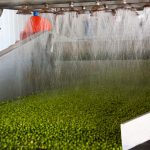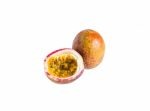
In the modern age, consumers need reliable fruit and vegetables to deliver not only aesthetic quality but also nutritional value as well. Two features for a more sustainable delivery of food in agronomy include biofortification and biodiversity. These two elements of agricultural research science have become more interesting to researchers as we struggle to feed diverse populations which are also steadily increasing in size.
The one factor which we will look at here is biofortification and deal with agronomic biodiversity in a separate article. The 2008 Copenhagen Consensus ranked biofortification as the fifth most important strategy to improve global welfare (Copenhagen Con. 2008). We can see that even in a more general level, it is a technology for improving people’s lives.
Biofortification is defined as a process to increase the bioavailability and the concentration of nutrients crops. It relies on both conventional plant breeding and recombinant DNA technology or genetic engineering to achieve improvements in crops that are targeted.
The idea has been with us for a number of years but really focusses on staple crops because these are main food sources for very poor people who rely on subsistence farming. Using biofortification targets low-income households (Nestel et al., 2006).
The technology is described by Howard Bouis in a book on ‘Food Fortification in a Globalized World’ (2018) as a way to deliver micronutrients to populations with limited access to diverse diets and other micronutrient interventions. Since the book was released it was reckoned that over 20 million farmers in the developing world were now growing biofortified crops.
At the IFT2020 event, one speaker di Gioia from the Department of Plant Sciences at Penn State University highlighted the role of biofortifying microgreens with iron and zinc to meet diet deficiencies.
The natural enrichment of crops with micronutrients means that people are now able to access critical vitamins and minerals that crops had not been able to deliver in the past.
How Does Biofortification Work?
Staple foods which are grown by communities across the world are the main vehicles for any enrichment programme. These are crops that are regularly consumed and thus grown in conditions appropriate to the country’s climate and soil. These crops will have undergone conventional crop breeding by researchers to develop new varieties. Some of these crops are transferred to various agricultural research services for further investigation. These crops are tested in different types of climate, soils and terrains. The new crops are then returned to the farmer for further growing.
One key feature; the seeds cost the same as the existing varieties. That means the cost of research is deferred.
One enormous programme has been extremely valuable in addressing biofortification needs. Harvest Plus was launched in 2004 with funds from the UK Department for International Development (DFID) and the Bill and Melinda Gates Foundation. This extensive research programme concentrated on increasing levels of zinc, iron and beta-carotene in seve key crops. Such crops were grown in areas of high subsistence farming and were cassava, rice, wheat, sweet potato, beans, pearl millet an maize (corn).
Selective Breeding In Biofortification
Selective breeding of crops is a very important approach generally in crop modification. One source of seeds is a seed bank. This is a collection of seeds that have been collected in the past. They often have the benefit of having greater genetic variation than current landraces and varieties. Classic examples of this have been seen in potatoes and tomatoes where older varieties have more vitamin A and C.
Wide Cross Breeding – using inter-breeding between a cultivated species and another normally closely-related species. In some cases hybrids are generated.
Mutagenesis
A technology for inducing genetic mutations to create new variations using chemical and physical methods. This is the approach used in genetic modification of crops.
Using Fertilizers
Fertilizers are the routes by which essential mineral micronutrients can be delivered to a plant. The issue is affected by a number of complex and interacting factors. The method of application, the soil composition, its mineral mobility in the plant and how it accumulates in the plant are all features requiring understanding.
A couple of minerals are notable for their level of mobility in both soil and plants. Iodine and selenium rich fertilizers are good examples. Zinc is especially mobile or fluid in soils so an application of zinc sulphate helps with increasing this minerals concentration in both legumes and cereals.
Biofortification Projects
The WHO has a useful e-library on Evidence for Nutrition Actions (eLENA) which listed some examples such as:-
- Improving the amino acid and protein profiles in sorghum and cassava crops
- Fortifying rice, wheat, maize and sweet potato with zinc
- Fortifying crops with selenium to improve levels of a nutrient needed for immunity.
- Improving provitamin A and carotenoid biofortification of staples like sweet potato and cassava
(1) The Golden Rice Project
Golden Rice is a rice crop rich in beta-carotene. The variety has been produced by genetic modification. It was initially produced with a relatively modest increase in the amount of beta-carotene. It also had a distinctive golden colour. In recent years a second variation with much higher levels has been created and is awaiting regulatory acceptance.
(2) Improving Selenium Fortification Of Wheat
In the UK, the levels of the important mineral selenium are very low and this is evident in wheat. One project in the early 2000s, used selective breeding and selenium rich fertilizers to increase levels in wheat. Adding only relatively small amounts of selenium into the soil produces significant improvements in levels in wheat.
(3) Fatty Acid Enrichment In Plants
Plant oil are key to good nutrition but some crops simply do not contain enough. Rapeseed oil contains lots of long-chain fatty acids. These are then converted in the body to other longer-chain fatty acids like docosahexaenoic acid (DHA) and eicosapentaenoic acid (EPA). The conversion rates are low. One method of selective breeding and modification produces crops with better production levels.
References
Copenhagen Consensus. (2008). Copenhagen Consensus 2008—Results. Frederiksberg, Denmark: Copenhagen Consensus Center.
Nestel, P., Bouis, H. E., Meenakshi, J. V., & Pfeiffer, W. (2006). Biofortification of staple food crops. The Journal of Nutrition, 136(4), pp. 1064-1067.



Interesting article which has got me thinking about my own gardening practices!
Should gardeners consider growing more heritage varieties in their garden? Would this improve the nutritional value of the harvest?
Do you have any advice about how to feed plants in the veg patch to ensue maximum nutrition in the harvest? Are organic fertilisers best or are there equally good products we can buy off the shelf?